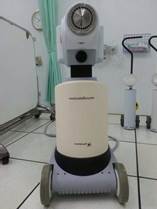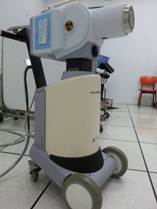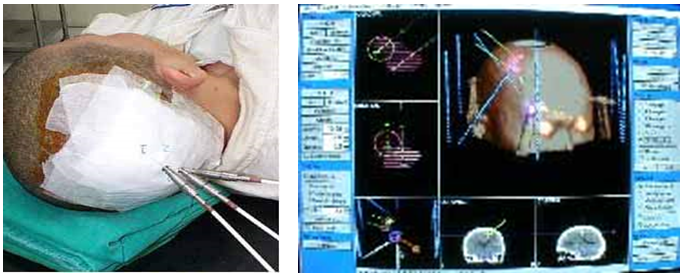

Brachytherapy places radioactive sources directly into or near the tumor
region. This enables tumors to be treated by a high dose of radiation but
has a rapid dose fall-off to the surrounding healthy tissues. High-Dose-Rate
(HDR) brachytherapy uses a higher-strength radioactive source contained
within an afterloading device. The afterloader delivers the source for a
short period of time to catheters or applicators placed at the tumor site.
HDR cervical cancer brachytherapy— A cervical cancer specific
applicator (Tandem and Ovoid applicator) is used to treat the tumor region.
The CT images and dose volume histogram (DVH) can be used to evaluate
the quality of the treatment plan.

HDR prostate cancer brachytherapy—Brachytherapy has become the
popular treatment for early stage prostate cancer. To use this technique,
selective patients are highly recommended, depending on the
characteristics of the tumor cell and the prostate size. Patients do not need
surgery but still have good treatment outcomes. Patients treated by HDR
brachytherapy have a much lower incidence of urinary incontinence
compared with radical surgery; furthermore, the probability of sexual
dysfunction is also significantly reduced.

Stereotactic Brain Implant—This technique combines brachytherapy
and stereotactic localization to treat large malignant brain tumors and
reduce normal brain complications. Cooperating with the neurosurgeon for
the stereotactic process in the operation room, computed tomography is
used to simulate the position of the applicator and Ir-192 source to ensure
the dose coverage of the tumor site. The dose delivery is done with high
accuracy using the High-Dose-Rate (HDR) afterloading device.

Three-dimensional computer treatment planning to perform dose
calculation and ensure tumor coverage is essential for brachytherapy.